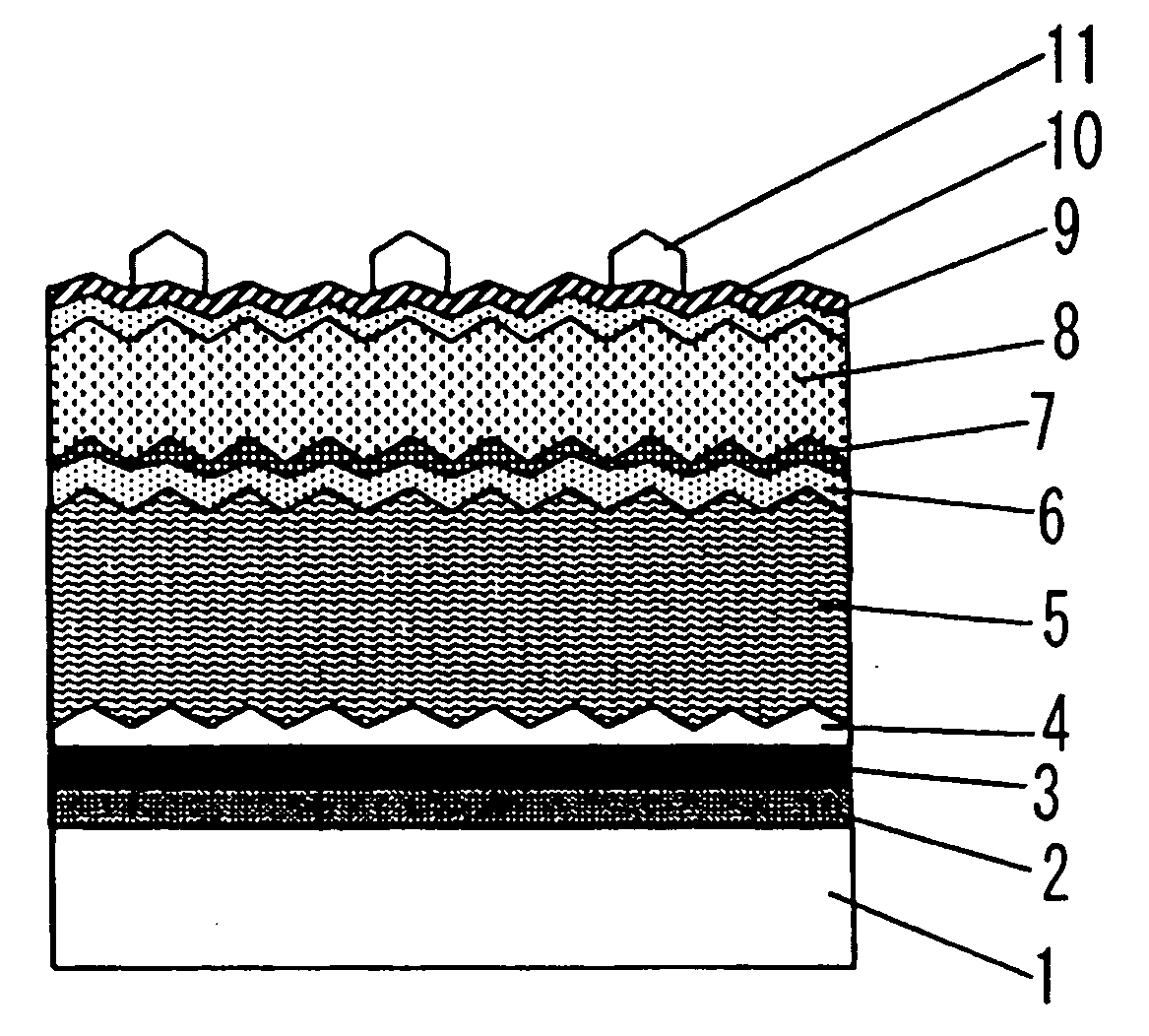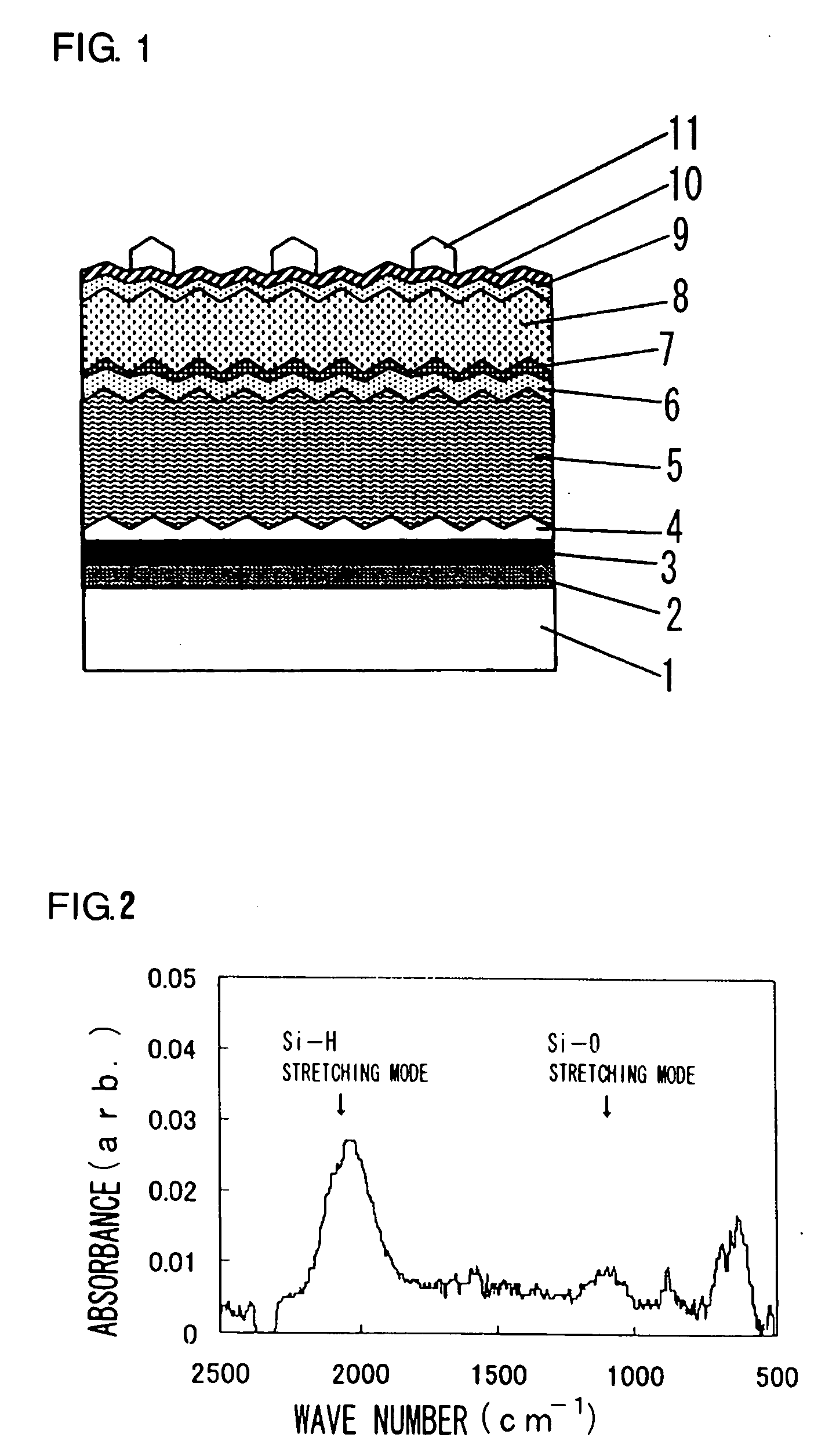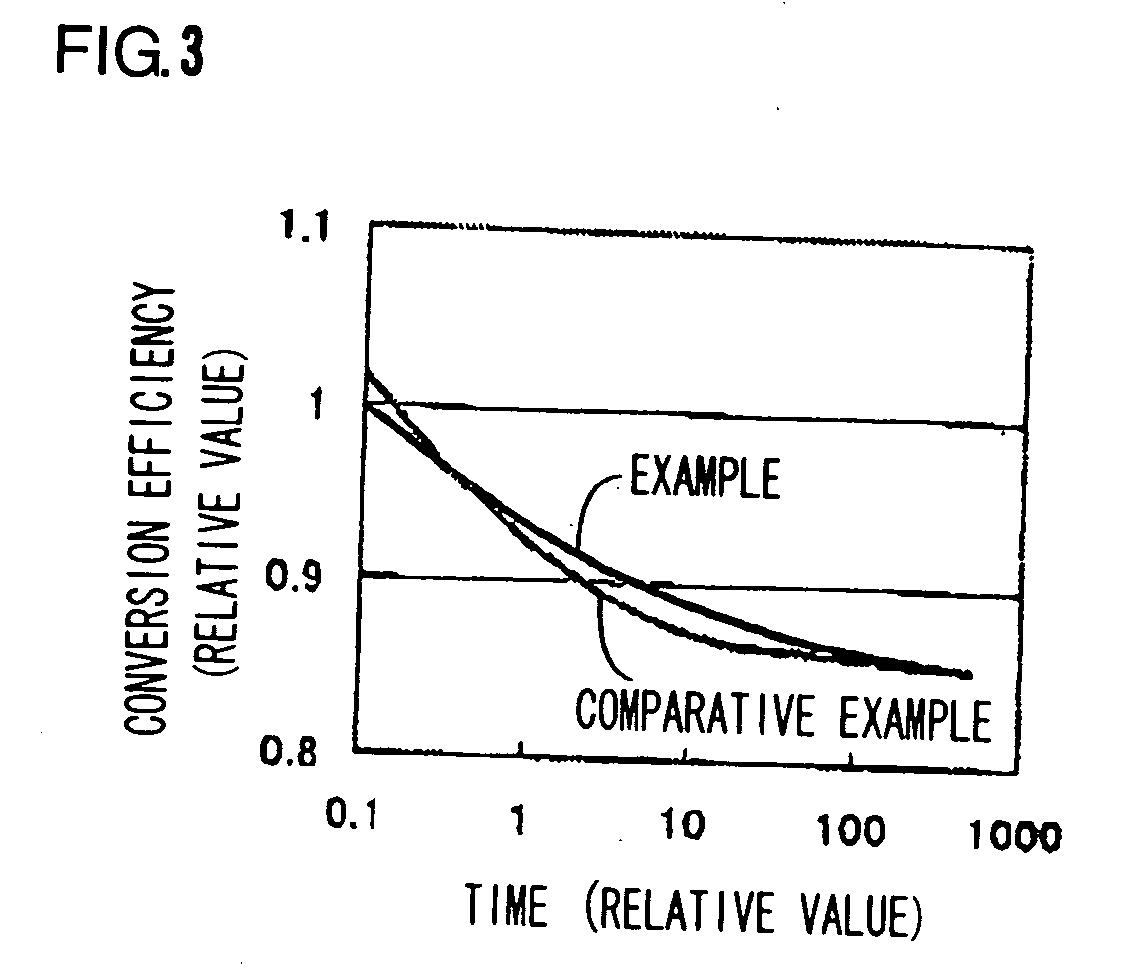Stacked photovoltaic device
a photovoltaic device and stacked technology, applied in the direction of semiconductor devices, electrical equipment, basic electric elements, etc., can solve the problems that the initial characteristics of the second photovoltaic unit are not provided a significant influence on the device at large, and achieve the effect of improving the total generated energy in the long-term service, increasing oxygen content, and increasing reaction pressur
- Summary
- Abstract
- Description
- Claims
- Application Information
AI Technical Summary
Benefits of technology
Problems solved by technology
Method used
Image
Examples
example
[0034]FIG. 1 is a sectional view showing a stacked photovoltaic device in accordance with an embodiment of the present invention. The stacked photovoltaic device (tandem type photovoltaic device) shown in FIG. 1 includes a first photovoltaic unit using an amorphous silicon layer as a photoelectric conversion layer and a second photovoltaic unit using a microcrystalline silicon layer as a photoelectric conversion layer, arranged in the sequence closer to a light incidence plane.
[0035] As shown in FIG. 1, a substrate 1 carries thereon a polyimide layer 2 on which a back electrode 3 is disposed. An n-type microcrystalline silicon (μc-Si:H) layer 4 (20 nm thick), an intrinsic (i-type) microcrystalline silicon (μc-Si:H) layer 5 (2 μm thick) serving as a photoelectric conversion layer and a p-type microcrystalline silicon (μc-Si:H) layer 6 (20 nm thick) are sequentially formed on the back electrode 3. These n-type, intrinsic and p-type microcrystalline silicon layers 4, 5 and 6 constitut...
PUM
 Login to View More
Login to View More Abstract
Description
Claims
Application Information
 Login to View More
Login to View More - R&D
- Intellectual Property
- Life Sciences
- Materials
- Tech Scout
- Unparalleled Data Quality
- Higher Quality Content
- 60% Fewer Hallucinations
Browse by: Latest US Patents, China's latest patents, Technical Efficacy Thesaurus, Application Domain, Technology Topic, Popular Technical Reports.
© 2025 PatSnap. All rights reserved.Legal|Privacy policy|Modern Slavery Act Transparency Statement|Sitemap|About US| Contact US: help@patsnap.com



